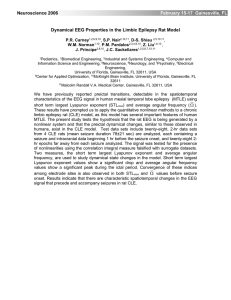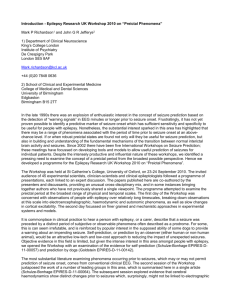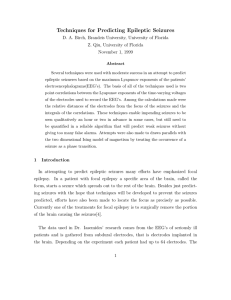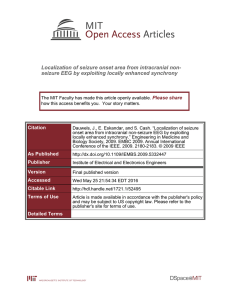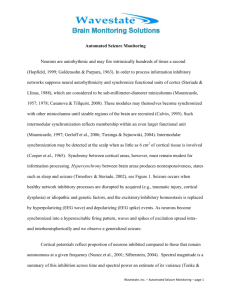Course Project in Neural Computation
advertisement
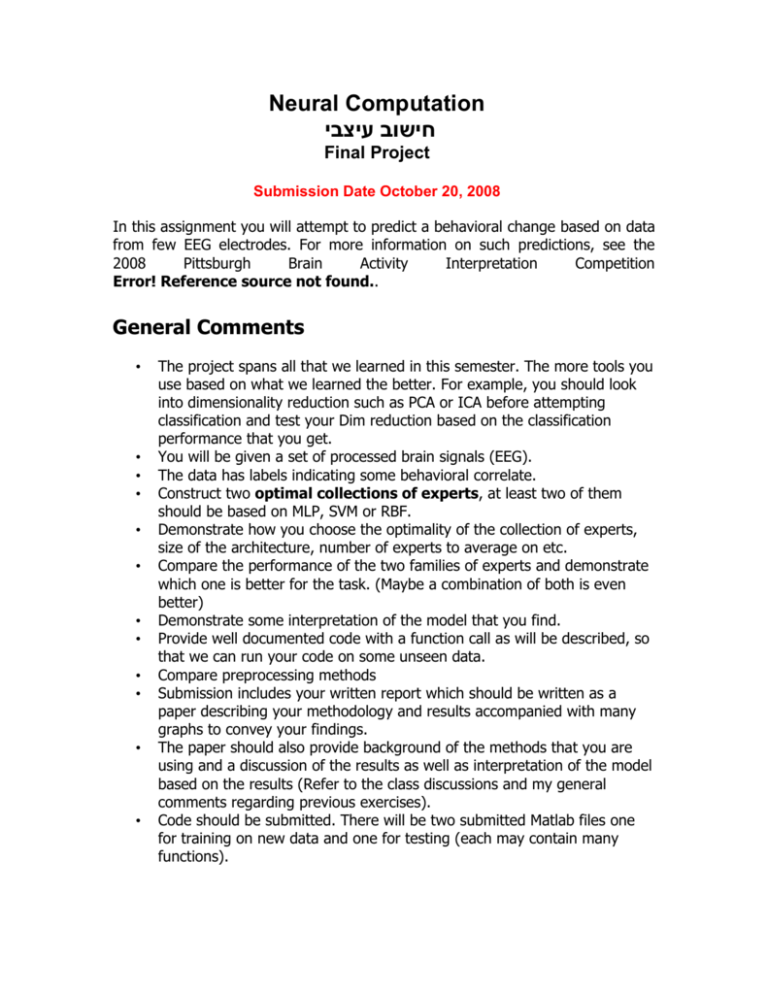
Neural Computation חישוב עיצבי Final Project Submission Date October 20, 2008 In this assignment you will attempt to predict a behavioral change based on data from few EEG electrodes. For more information on such predictions, see the 2008 Pittsburgh Brain Activity Interpretation Competition Error! Reference source not found.. General Comments • • • • • • • • • • • • The project spans all that we learned in this semester. The more tools you use based on what we learned the better. For example, you should look into dimensionality reduction such as PCA or ICA before attempting classification and test your Dim reduction based on the classification performance that you get. You will be given a set of processed brain signals (EEG). The data has labels indicating some behavioral correlate. Construct two optimal collections of experts, at least two of them should be based on MLP, SVM or RBF. Demonstrate how you choose the optimality of the collection of experts, size of the architecture, number of experts to average on etc. Compare the performance of the two families of experts and demonstrate which one is better for the task. (Maybe a combination of both is even better) Demonstrate some interpretation of the model that you find. Provide well documented code with a function call as will be described, so that we can run your code on some unseen data. Compare preprocessing methods Submission includes your written report which should be written as a paper describing your methodology and results accompanied with many graphs to convey your findings. The paper should also provide background of the methods that you are using and a discussion of the results as well as interpretation of the model based on the results (Refer to the class discussions and my general comments regarding previous exercises). Code should be submitted. There will be two submitted Matlab files one for training on new data and one for testing (each may contain many functions). • • • • When your code reads new (unseen test data) it should provide a vector of outputs indicating the probability of the behavioral label of each observation. Important! You should submit enough material to allow us exactly reproduce your results. In particular, if you are using any randomization in you algorithms, you should submit the values used for seeding the random number generator. Thus, submission includes five files, one in word or html format (with the figures) two code files and one with predictions on the two test data sets that will be given later. Submit to ninbbelt@gmail.com with the subject: Final NC08 family name of all participants. Background See review presentation Download data files Task Description Under the folder 'Project' you'll find EEG data for your project. There are two folders with files of subject1 and subject2. For subject1 there are 8 files, each file holds data preceding one seizure. For subject2 there are 4 files, each file holds data preceding one seizure. The files are in matlab format (they can be opened inside matlab). Each file contains matlab variables with data from 3 electrodes closest to seizure foci. The variables are: pre_preictal- 0.5 hour data segment beginning 2 hours before seizure. preictal - 10 min data segment beginning 30min before seizure. These variables are matrices of format [electrode X time_samples], each row is a signal from one electrode recorded at sampling rate 200Hz. Some Additional variables I don't think you'll need: electrodes - numbers of the electrodes from which the data was taken. preictal_start/end - time of start and end of the preictal segment. pre_preictal_start/end - time of start and end of the pre preictal segment. Good Luck, Ilana Prediction Accuracy Scoring The prediction accuracy will be scored by calculating average root-meansquare error between the `ground truth` and your prediction across all 6 datasets. Contact Details For technical questions contact Ilana at ilanap@gmail.com Note that Ilana does NOT handle any organizational issues like submission deadlines, postponements, etc - for these contact Nathan Intrator.
